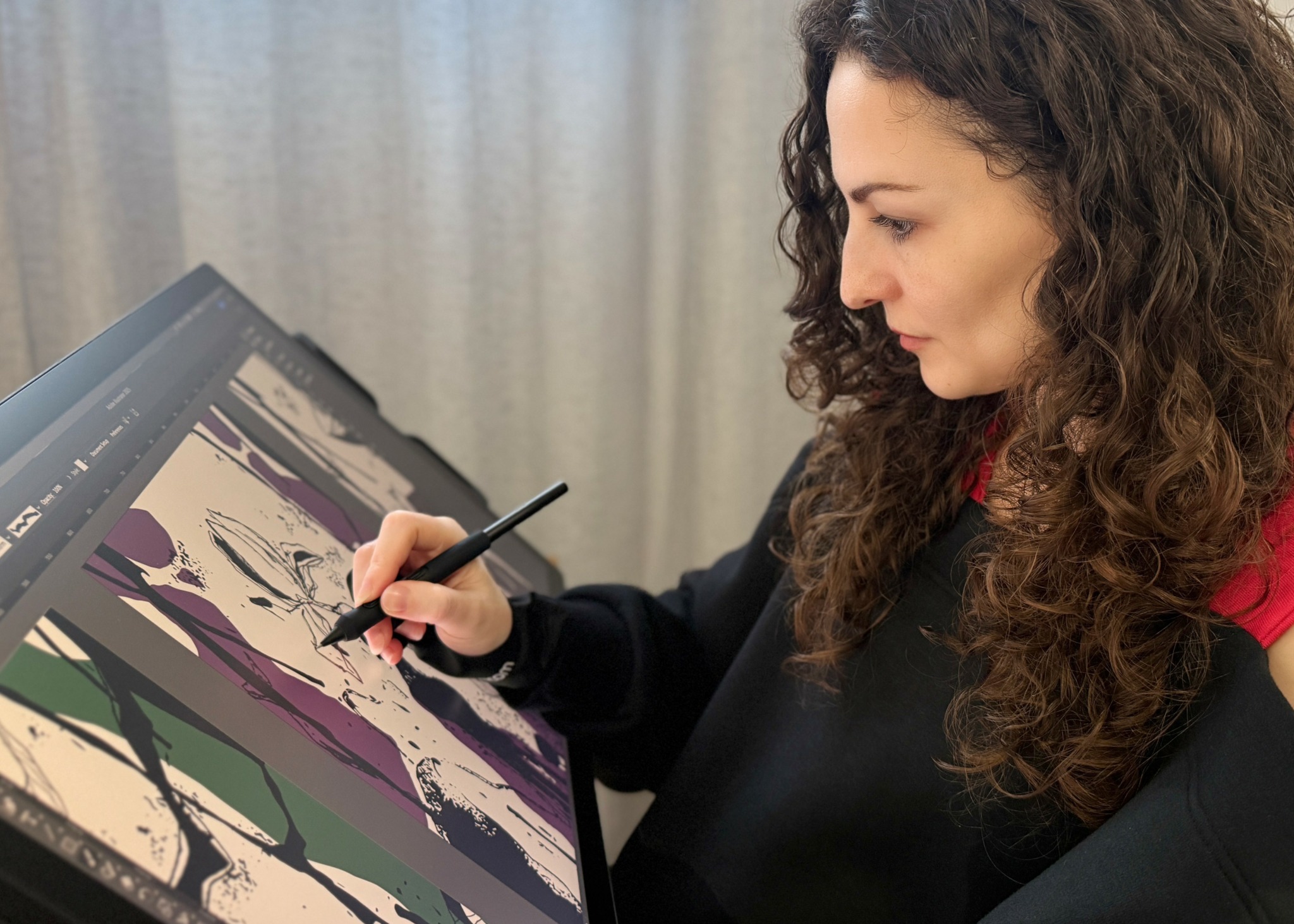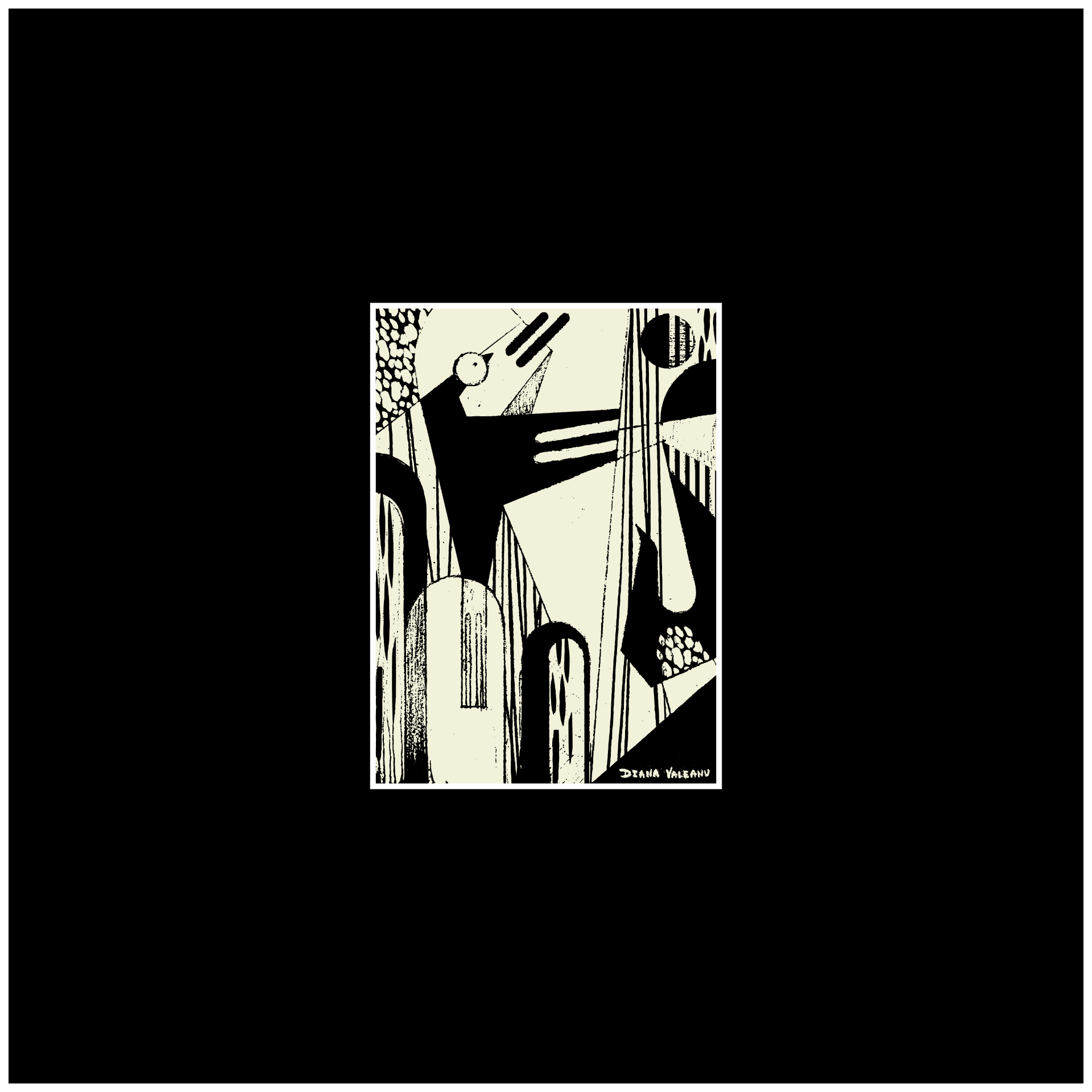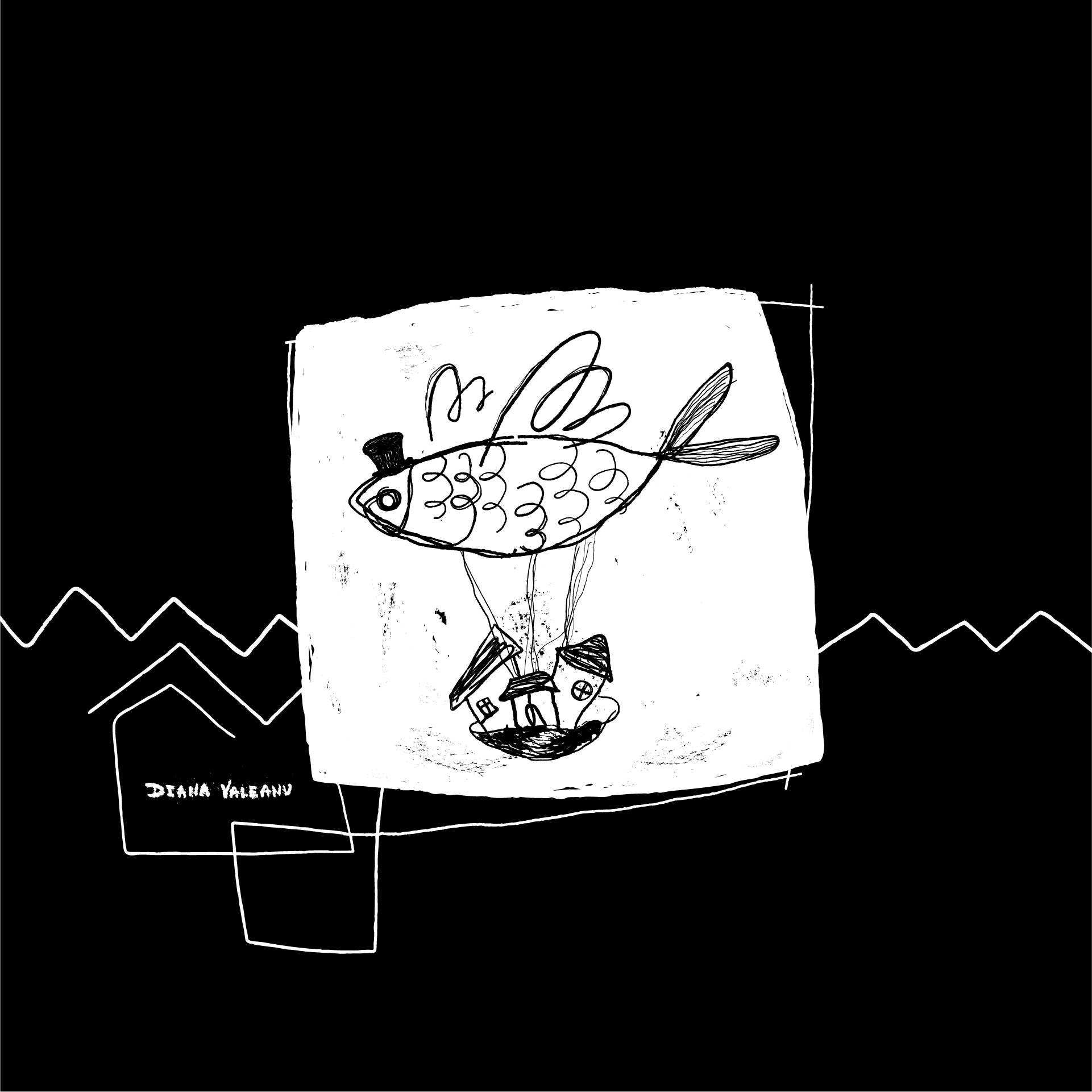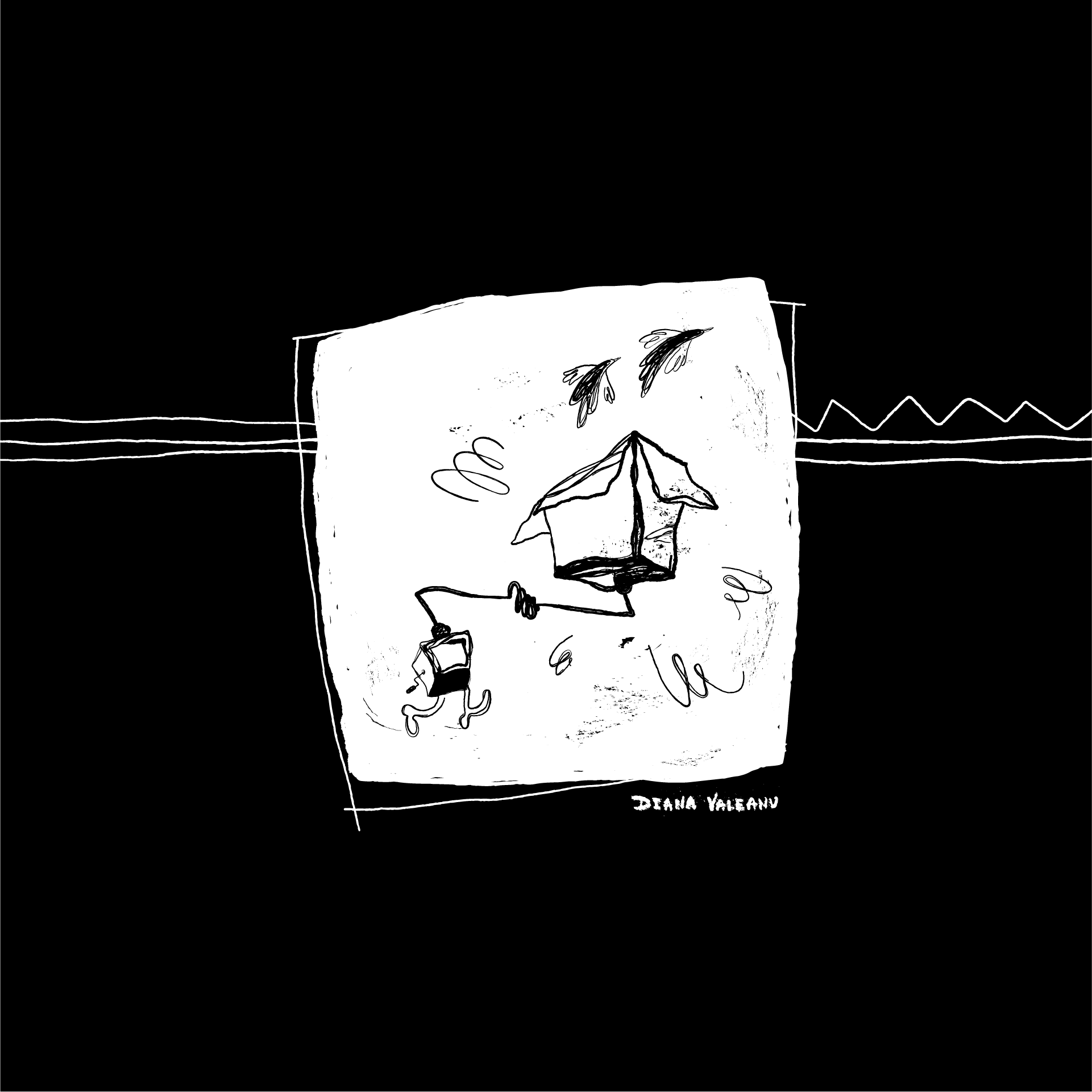We’re excited to introduce you to the always interesting and insightful Diana Valeanu. We hope you’ll enjoy our conversation with Diana below.
Hi Diana, thanks for joining us today. Did you always know you wanted to pursue a creative or artistic career? When did you first know?
Creativity has been part of my life in various manifestations since I have a memory of myself. I couldn’t tell you an exact moment — it was more of a process than a “Eureka” moment.
I was raised in a monoparental family. The ’90s in Moldova were difficult times, and even more so for a single mother with a little child. My mother had to work until late to make a living for us, and sometimes on weekends, too.
Every day after my school classes, I used to come back home and spend a lot of time alone. We lived in an almost empty apartment during the first years after my parents divorced; we didn’t even have a TV then. So, for me, it was essential to immerse myself in all kinds of activities, apart from my school homework assignments. I used to find various creative outputs until my mother came back from work; I liked to draw, make collages and all kinds of crafts with what I could find at home, and then gift them to her – like most kids, I guess.
I knew my mother couldn’t afford any extra outgoings, so I used to try all kinds of creative activities that didn’t cost money. When I was around 10 years old, I joined a free club created by a colleague’s mother where I could learn to crochet. A few years later, I joined some free after-school drawing classes curated by our school teacher; she also taught me the basics of tapestry. And during summer vacations in the countryside, my grandmother taught me embroidery. So, as I grew, I could include more and more creative activities in my daily routine.
In my teenage years, I realized that perhaps my passion for creating something could become my future profession. First, I was thinking about becoming a clothing designer, then an interior designer. I started moving furniture and decor back and forth in our one-room apartment – that was my idea of interior design at the time.
I used to make changes in our interior almost weekly, and I have to assume my mom wasn’t especially pleased with my new creative output during those years. It’s all fun and games until you come home from work and find your furniture isn’t where it was when you left in the morning.
A few years later, when I had to choose where to study, I visited the Technical University of Moldova, where I learned a little about industrial and product design (though I hadn’t yet decided to study it).
That was when I met one of my future professors for the first time. I remember how he led me to a closed door and said: “I’ll show you what our students do almost daily. If it won’t intimidate you, and you come back in September, then this is for you, and you’ll be able to study here. Not many come back.” We entered the room.
There were lots of students’ works: models and mock-ups made from plastic and paper, drawings, paintings, sculptures, and much more. I wasn’t only unintimidated – I was amazed! It was like a secret world hidden in that office.
And of course, I came back in September. I had the honor to learn from some of the best professors I could ever wish for – most of them local artists and designers. I learned so many things from them and always remember them with respect and admiration.

As always, we appreciate you sharing your insights and we’ve got a few more questions for you, but before we get to all of that can you take a minute to introduce yourself and give our readers some of your back background and context?
I’m Diana Valeanu – the creative mind and voice behind the absurd.design project.
I was born in Chisinau, the capital of the Republic of Moldova. In my late student years, I worked in parallel on industrial and product design in a local company and on some freelance projects. Working in parallel with studying helped me to quickly understand that I wanted to change my trajectory, while still remaining in the creative industry.
At that time, I began to take interest in graphic design and illustration and decided to take steps in this direction, which later led me to the decision to invest the money I earned from the freelance projects in my first Wacom Cintiq tablet. It’s a very large device – almost as big as a TV – and buying it didn’t seem like the smartest decision at first!
For one, I didn’t have the space. But I knew I wanted a drawing tablet with an interactive display, and I’d buy it no matter what. And if I had to use it in the hallway, that’s what I would do!
What’s more, at the time, getting something delivered in Moldova was challenging – especially a large, heavy, fragile device.
But I managed to find a local company which could help me to order the tablet from Germany and deliver it to Moldova. I had to pay in full in advance and wait around two or three months for the device to be (hopefully!) delivered.
I’d invested all the money earned from freelance projects in that first Cintiq – but I didn’t yet know it was the best decision I could have made.
During the long months waiting for the Cintiq to be delivered, a few things changed: I successfully graduated from the university, and moved with my boyfriend (now my beloved husband) into our first rented apartment. Which solved the problem of space!
At last the tablet arrived, and my creative journey began to take a very distinct shape from what it had before. I still worked on my clients’ 3D modeling projects like before, but something significant changed: I started to experiment a lot more in my free time than earlier because I wanted to make the most of my acquisition. And I started to focus more and more on digital illustration, UI icons, and infographic design.
I wanted to try as many things as possible, to understand what I liked the most. Gradually, my creative focus shifted to 2D, and 3D modeling began to feel less relevant.
I developed an independent project with a focus on UI icon design. But even though the designs were high quality, the project didn’t work out. I didn’t yet have enough marketing experience to position the products effectively and ended up selling the project. A few years later, together with my husband, we moved to Barcelona, Spain. By then, I had completely dropped my 3D modeling work to focus exclusively on infographic design and digital illustration – primarily for Designmodo.com.
Fun fact: the intro series from absurd.design, which is a series of 11+4 free illustrations, was initially planned as a downloadable freebie on Designmodo.com. However, it never happened. The illustrations seemed to have much more potential than a giveaway, and in the end, I launched them as part of an independent project.
As you can guess, I’m talking about the absurd.design project whose creative mind and voice I am and with which I started my story. And it was true: what was originally intended to be a freebie became an independent creative project that I’ve curated for almost 6 years now.
The absurd.design project has a distinct approach to how other graphic resources work. It’s an artist-curated project, and the project membership is limited to 300 people at a time. Members pay a monthly or annual fee for the duration my illustrations are displayed in their projects. To my knowledge, the absurd.design project was the first ever illustration project that implemented this model, and I encourage other creatives to implement or adjust this model to their needs and requirements.
There’s only one place to find high-quality hand-drawn illustrations with an already recognizable characteristic – the playful quirkiness and unlimited interpretations that spark curiosity. This is just one of the things why project members love supporting the absurd.design project. They know the value they pay for: it’s an artist-curated project, which means it combines creative vision, attention to detail, and a human approach, making it a unique and enjoyable experience for the project members from the very beginning.
In parallel to the illustrations, with the monthly newsletters, I try to educate people to choose art consciously while supporting and respecting creatives’ work. Also, I encourage people to spark their imagination while looking at things from many perspectives, and embrace art with its quirky manifestations and imperfections. So basically, I created a project I wanted to exist and haven’t seen before.
Today, the absurd.design project has around 8,000 newsletter subscribers. For some people, that might not sound like much. But for me – as I’ve never invested in marketing and barely use social media – 8,000 newsletter subscribers is an important milestone. It’s not just a number; it’s my community. The project grows step by step, with the valuable support of the project members and with the help of the project admirers who kindly spread the word about it. And I’m so thankful to all those amazing people and, of course, to my husband, who not only keeps an eye on the tech side of the project but also is my number one supporter in all my creative endeavors over the years.

Can you share a story from your journey that illustrates your resilience?
A few years ago, I was considering new creative endeavors aside from the absurd.design project. I started making steps in a new direction, but then I lost my mother. She died of cancer at 54, and losing her made me feel mentally out of life for almost two years. After she passed away, I gave myself two months to mentally process what had happened and decided that after that time, I had no excuses but to get back to work. I knew if I let myself remain in the state of mind of a victim of circumstances for any longer, it would be harder to return to normal life.
And I got back to work, but not as before. I had insomnia as a consequence of what happened (and I had to deal with it for more than a year after that). I was exhausted, so I decided to take it step by step. I put on hold what I started to do before – creative provocations were the last thing I wanted and could manage at that moment.
I also decided not to take any commissioned work for a while. The only thing I could manage to keep doing was creating illustrations for the absurd.design project members, writing texts for monthly newsletters and answering the emails I was receiving.
I remember, a short time after my mother passed away, I had to write the text for a monthly newsletter. I had the blank page in front of me, but I couldn’t focus and think of anything else but the hand I touched so many times when she was laying unconscious in the hospital. And then I thought, if I can’t think of anything else, I’ll do my best to write that monthly newsletter as is, and I started writing “Today I have to confess something truly personal – I always try to remember the hands of the people I love”…
That email text was very concise if compared to the usual length of the newsletters I send to the subscribers, but it took me hours to write it. In the end, I managed to write in voice that wasn’t too distinct from the usual project. Then came more newsletters and illustrations until, step by step, I got back to my usual state of mind.
I’ve always been inspired by the people whose challenging experiences didn’t channel them to spread negativity in the world. I think my role model in this sense was my grandmother. We all have bad times, moments of grief or anger that affect us. Still, I believe that by taking some time for introspection, we can choose not to embrace self-destructive behaviors or a mindset of hate toward the entire world because of our inner pain. Of course, grief, anger, and all those emotions society tries to avoid must find their escape channel. The question is: how should they take shape?
Currently, I feel I can continue what I started some years ago; it’s something distinct from what I’ve been creating until now. I’ll just say that my personal website dianavaleanu.com is in the works right now, and hopefully, I’ll manage to make the magic happen by the end of 2025!

How can we best help foster a strong, supportive environment for artists and creatives?
First of all, and the most important in my vision, is education. Society should educate and train a keen eye for any kind of creativity. It’s truly important to learn more about creativity and art and understand that sometimes art and creativity are not as easy to understand without studying the whole context.
With that understanding comes the consciousness of the importance of supporting artists and creatives.
Everyone can contribute to a creative person’s journey and growth, either by supporting their projects, commissioning art, buying art or getting a license to use a particular art, visiting museums, galleries, and exhibitions, or spreading the word about the creatives and their work. It’s truly important to give the proper credits and not use any art or creative work in any way without a proper license of use or authorization.
It’s possible to find art on any budget. If a unique piece of art is too expensive for a particular person’s budget, there are always other options at a lower cost, like limited edition pieces or, the most affordable option: an open edition.
I also whole-heartedly recommend buying art from artists directly or from authorized art sellers. Society must not tolerate and contribute to such practices as making, buying, and selling unauthorized copies, nor asking an artist or creative to work for free. It’s essential to understand that in our reality, a creative makes a living and pays their taxes from their work, as every other person in this world. This doesn’t sound as bohemian as someone would wish, but this is the reality. We should stop romanticizing creatives’ lives, they have nothing in common with what we see in the movies.
Contact Info:
- Website: https://absurd.design/
- Instagram: https://www.instagram.com/madebyabsurd/
- Linkedin: https://www.linkedin.com/in/dianavaleanu/
- Other: My personal website, soon to be launched: https://www.dianavaleanu.com/




